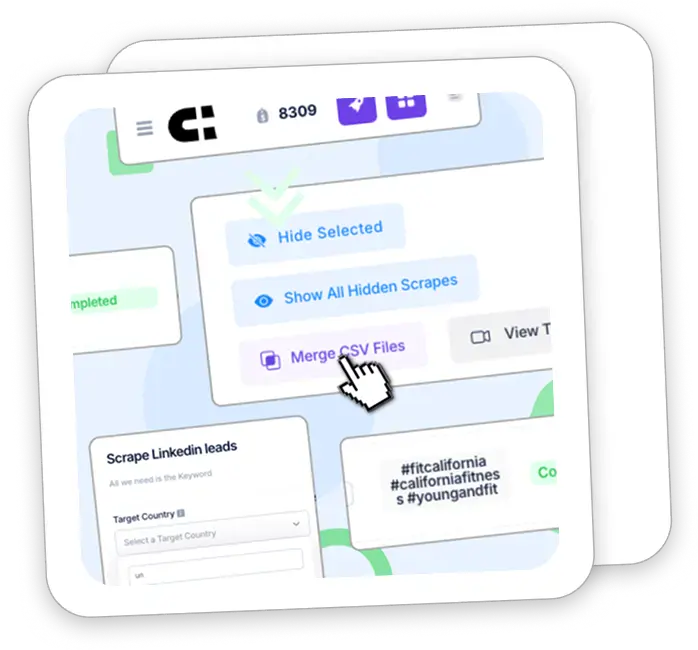How to Sell Leads: Turning Prospects into Revenue
2 mins read

How to Sell Leads: An Introduction to the Role of Leads in Business Growth
Understanding how to sell leads becomes the key to unlocking significant revenue potential in the business world, where leads—individuals or organizations interested in your product or service—play a critical role in the sales cycle. While the generation of these leads is an indispensable step, the art and science of effectively selling these leads could be the game-changer for your business’s revenue and overall profitability. This article is your guide on how to sell leads, shedding light particularly on transforming prospects into a constant revenue stream.
Table of Contents
Understanding Leads: The Lifeblood of Your Business
In the simplest terms, a lead is a person or company that’s shown an interest in your products or services. Whether they’ve filled out a form on your website, followed you on social media, or subscribed to your newsletter, these potential customers have demonstrated some level of engagement with your brand, making them prime targets for your sales efforts.
However, generating leads is only half the battle. The real challenge—and the key to driving revenue growth—lies in converting these leads into actual sales. This process of ‘selling leads’ involves guiding potential customers through your sales funnel, building relationships, and ultimately convincing them to make a purchase.
Identifying Qualified Leads: Panning for Gold
To sell leads effectively, you need to start by distinguishing which leads are most likely to result in sales. These ‘qualified leads’ are individuals or organizations that have a genuine need for your product or service, the financial means to purchase it, and the authority to make buying decisions.
A large part of this process involves ‘lead scoring’—a methodology used to rank prospects based on their perceived value to your business. Lead scoring takes into account various factors, including a lead’s level of engagement with your brand, their stage in the buying cycle, and their compatibility with your ideal customer profile.
Lead Nurturing: Cultivating Strong Relationships
Once you’ve identified your qualified leads, the next step is to nurture these relationships. This means providing potential customers with relevant information about your products or services, helping them understand the value they’ll receive from doing business with you, and building trust over time.
Effective lead nurturing strategies can include everything from personalized email marketing campaigns to social media engagement, informative webinars, and even direct phone calls. Each interaction is an opportunity to bring the lead closer to making a purchase, so it’s crucial to deliver valuable, persuasive content at every touchpoint.
Closing the Sale: The Moment of Truth
After nurturing your leads, it’s time to close the sale. This is often the most challenging part of the process, but with the right approach and strategy, it can also be the most rewarding.
There are many different closing techniques, and their effectiveness can vary widely depending on the lead’s specific needs and the nature of your business. Some of the most common methods include the ‘hard close,’ which pushes the lead to make an immediate decision; the ‘assumptive close,’ which operates under the assumption that the lead is ready to buy; and the ‘summary close,’ which recaps the benefits of your offering before asking for the sale.
Harnessing the Power of Technology: CRM and Lead Management Software
In the digital age, technology plays a pivotal role in managing and selling leads. Customer Relationship Management (CRM) systems and lead management software can provide you with a suite of tools to track, manage, and analyze lead data, helping you understand your leads better, monitor their journey through your sales funnel, and identify opportunities for engagement and conversion.
For instance, CRM software allows you to capture and organize lead data, track interactions, and automate certain marketing tasks, helping you nurture leads more efficiently. Lead management software, on the other hand, can help you score leads, track their progress through your sales pipeline, and analyze conversion rates to identify areas for improvement.
Continuous Learning and Improvement: Staying Ahead of the Curve
Selling leads is not a set-it-and-forget-it process. To maximize your return on investment and stay ahead of the competition, you need to commit to continuous learning and improvement. This means regularly reviewing and refining your lead generation and sales strategies based on changing market conditions, customer behaviors, and business goals.
Performance Analysis and Feedback
A key part of this continuous improvement process involves performance analysis. By tracking key metrics like lead conversion rates, cost per lead, and overall return on investment, you can gain valuable insights into the effectiveness of your sales efforts.
You should also seek feedback from your leads and customers whenever possible. Are they satisfied with their experience? What could you do better? Their answers can provide a wealth of information for improving your lead selling strategies and tactics.
A/B Testing and Experimentation
Another crucial aspect of improving your lead selling process is A/B testing and experimentation. By testing different approaches—whether it’s a new email marketing strategy, a revamped sales script, or a redesigned landing page—you can identify what works best and continuously optimize your sales efforts.
Remember, what works for one business might not work for another, and what works today might not work tomorrow. So, always be testing, learning, and adapting.
Upgrading Skills and Knowledge
Lastly, never underestimate the importance of ongoing education. The world of lead generation and sales is continually evolving, with new strategies, technologies, and best practices emerging all the time. By upgrading your skills and knowledge, you can stay on top of these trends and ensure your business remains competitive.
Turning Leads into Revenue – A Journey, Not a Destination
Selling leads—turning prospects into revenue—is not a one-off task but an ongoing process. It begins with understanding what leads are and why they’re critical to your business. Then, it involves identifying qualified leads, nurturing these relationships, and finally, closing the sale.
Along the way, technology can be an invaluable ally, helping you manage and analyze lead data, streamline your sales processes, and optimize your efforts based on real-time insights. However, technology alone is not enough. A commitment to continuous learning, improvement, and adaptation is also essential.
With the right strategies, tools, and mindset, you can master the art of selling leads and turn prospects into a steady stream of revenue for your business. Here’s to your success!
Explore more lead generation strategies and tools
- B2B Lead Generation Solutions – Guide for 2025
- How to Build a High-Quality B2B Email List for Outbound Marketing
- Buy Email Lists for Marketing in 2025: Complete Guide to Business Leads
- Why Scrape Google Maps? Use Cases for Sales, Marketing & SEO
- B2C Lead Generation: The 2025 Playbook
- 15 Best Lead Generation Companies for 2025
- Best B2B email list providers in 2025
- Top Lead Generation Agencies Compared (2025)
- 18 Best B2B Lead Generation softwares in 2025
- Lead Generation Guide: Strategies & Tools for 2025
Find your email list by industry
- Get Fresh Veterinarians Email List 2025
- Get Fresh Chief Revenue Officers Email List 2025
- Get Fresh Banking Email List 2025
- Get Fresh Real Estate Email List 2025
- Get Fresh VP Email List 2025
- Get Fresh Retail Industry Email List 2025
- Get Fresh Chief Sales Officer Email List 2025
- Get Fresh Hospitals Email List 2025
- Get Fresh Healthcare Email List 2025
- Get Fresh Restaurant Email List 2025
- Get Fresh Chiropractors Email List 2025
- Get Fresh Hotels Email List 2025
- Get Fresh COO Email List 2025
- Get Fresh Contractors Email List 2025
- Get Fresh IT Decision Makers Email List 2025
- Certified Public Accountants Email List 2025
- Get Fresh Real Estate Agents Email List 2025
- Get Fresh Insurance Agents Email List 2025
- Get Fresh Mining Industry Email List 2025
- Get Fresh Chief Information Officers Email List 2025
- Get Fresh Pharmacists Email List 2025
- Engineers Email List: Reach Your Target Audience with Precision
- Get Fresh Mortgage Brokers Email List 2025
- Get Fresh HR Email List 2025
- Get Fresh Attorneys Email List 2025
- Oil And Gas Industry Email List 2025
- Chief Marketing Officer Email List 2025
- Email Extractor Ultimate Guide 2025
- CFO Email List – Get Targeted CFO Contacts in 2025
- How to Get a Homeowner Mailing List in 2025?
- Realtor Email List 2025
- Dentists Email List 2025
- Get Fresh CEO Email List 2025
- Marketing Directors Email List: How to Build and Use One for Your Business




